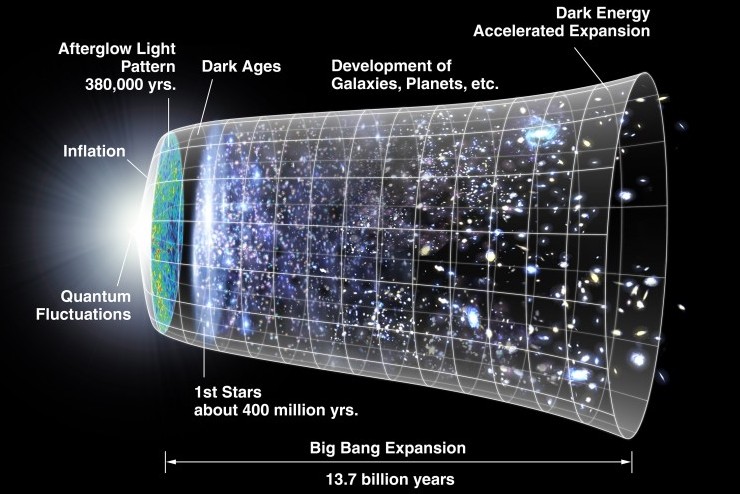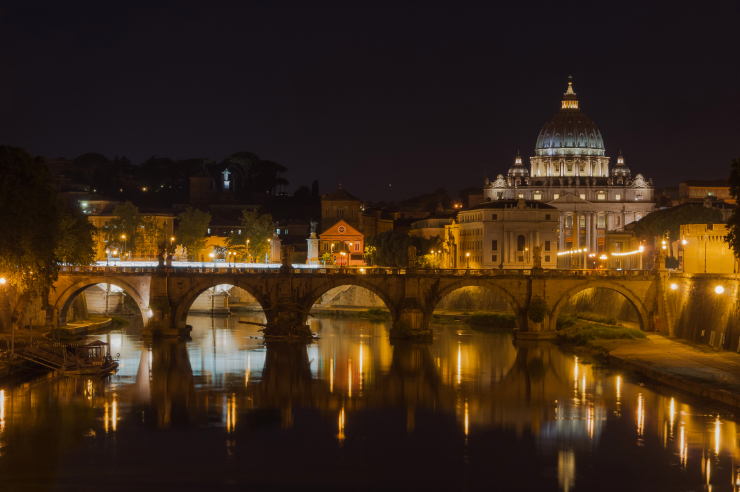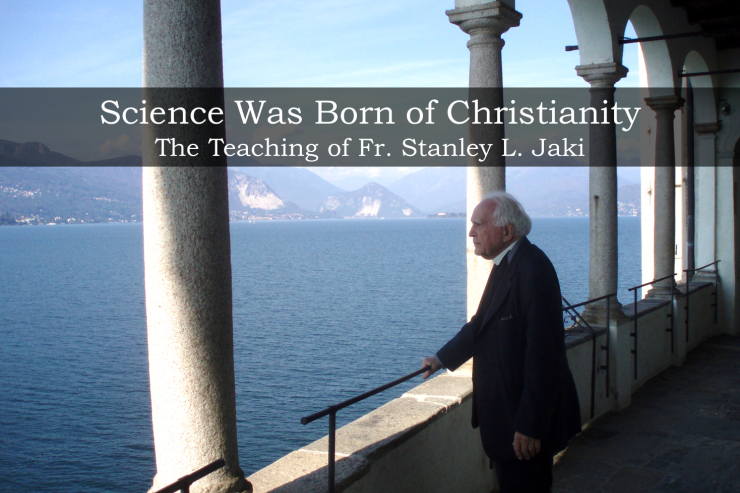After the introduction of the Big Bang theory by Alexander Friedmann (1922) and Catholic priest Georges Lemaître (1927), it was reported three decades later that still two-thirds of American astronomers thought the universe had no beginning, similar to the ancient pantheistic Greek belief in an eternal cosmos.
Today the Big Bang theory is accepted. In studying that beginning, scientists have learned how symmetry unified the gravitational and electromagnetic forces in the exponential expansion of the primordial cosmos. That symmetry, once broken, seems to give way to deeper symmetries so finely-tuned that scientists even muse the universe shouldn’t exist. The ongoing search for physical laws, however, led to the prevailing theory of “supersymmetry” and a search for ever-smaller, inter-related particles.
In the first roughly one trillionth of a trillionth of a trillionth of a second after the universe’s birth, scientists are discovering a fine line between chaos and stability. Physicist and atheist Sean Carroll remarked that the mass of the latest discovered particle, the Higgs boson, turns out to be “right on the edge” in terms of the universe’s stability. Tia Ghose of Live Science described it, “A little bit lighter, and the Higgs field would be much more easily perturbed; a little heavier, and the current Higgs field would be incredibly stable.”
While it is inappropriate to extract theological meaning from incomplete scientific theories, it is insightful to note consistencies with Christian thought.
Obviously, the idea that the universe had a beginning is consistent with the first words of Genesis, and so is the idea of order and symmetry. St. John referred to Christ as the “Father’s only-begotten Son full of grace and truth,” using the Greek word monogenes to express “only begotten.” In ancient Greece monogenes referred to the eternally emanating cosmos. In Latin it translates as unigenitus, or universum. To Plato, the monogenes was the Unknown God, the universe itself. When John called Christ by the same words, it marked a radically different view of God and of the cosmos. The Unknown God was named the Christian God, a Trinitarian and Incarnational God. Christ, the Second Person of the Holy Trinity, the Son, became man. Christ, as God, created the universe. Christ, the Word, the Logos, is Rationality Itself.
Catholic physicist Peter Hodgson once wrote something similar to Carroll’s comment about the fine line between stability and chaos, but it was in reference to God and the overall order of the universe. “There is here a delicate balance between the rationality and the freedom of God.” To believe God set the world in motion and left it to run, leads to determinism. A God of unpredictable volition, gives us chaos. Both beliefs are inimical to the growth of science, and Christianity accepts neither.
In the context of Christianity, physical symmetry and fine-tuning give insight into the language of God who freely chose to create an ordered universe, but who interacts in human history and holds everything in existence by His will. That scientists, both atheist and Christian, search for such insight is evidence they trust such stability and symmetry exists. Is it any wonder that science was born in a Christian culture?
References and Further Reading:
- The survey of leading American physicists and astronomers is found in “How Cosmology Became a Science,” by Stephen Brush (Scientific American, Volume 267, Issue 2, August 1992); and this survey was referenced by Stephen Barr in Modern Physics and Ancient Faith (Notre Dame: University of Notre Dame Press, 2003, p. 43) and by Christopher Baglow in Faith, Science, and Reason: Theology on the Cutting Edge (Mobile: Midwest Theological Forum, 2011, p. 145).
- I recommend Live Science for following the latest scientific news, and specifically Staff Writer Tia Ghose who interviewed me last December about the belief in the Virgin Birth. Tia is reliably objective in her reporting.
- For a discussion of St. John’s use of the word monogenes, see the essay “Christ and the History of Science,” in A Late Awakening and Other Essays by Fr. Stanley Jaki, priest and physicist (Port Huron: Real View Books, 2006, pp. 55-56). I also discuss this in my book, Science Was Born of Christianity: The Teaching of Fr. Stanley L. Jaki (Habitation of Chimham Publishing, 2014, pp. 160-164).
- To read more about theology and modern physics, I highly recommend Theology and Modern Physics by Peter Hodgson (Burlington: Ashgate Publishing Company, 2005), particularly Chapter 11 “Chaos and Symmetry” and Chapter 2 “The Judeo-Christian Contribution to the Development of Modern Science.” The quote in the above essay was taken from the section of Chapter 2 titled, “The Origin of Science.”
If you liked this article, please share it with your friends and family using both the Recommend and Social Media buttons below and via email. We value your comments and encourage you to leave your thoughts below. Thank you! – The Editors















